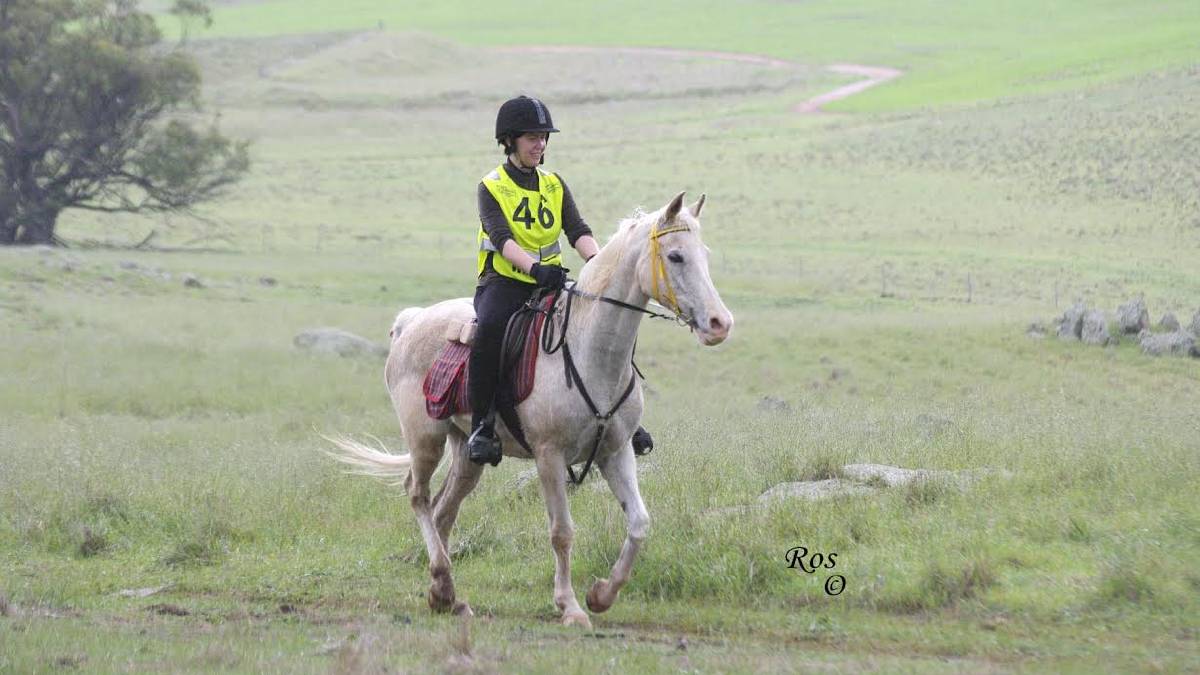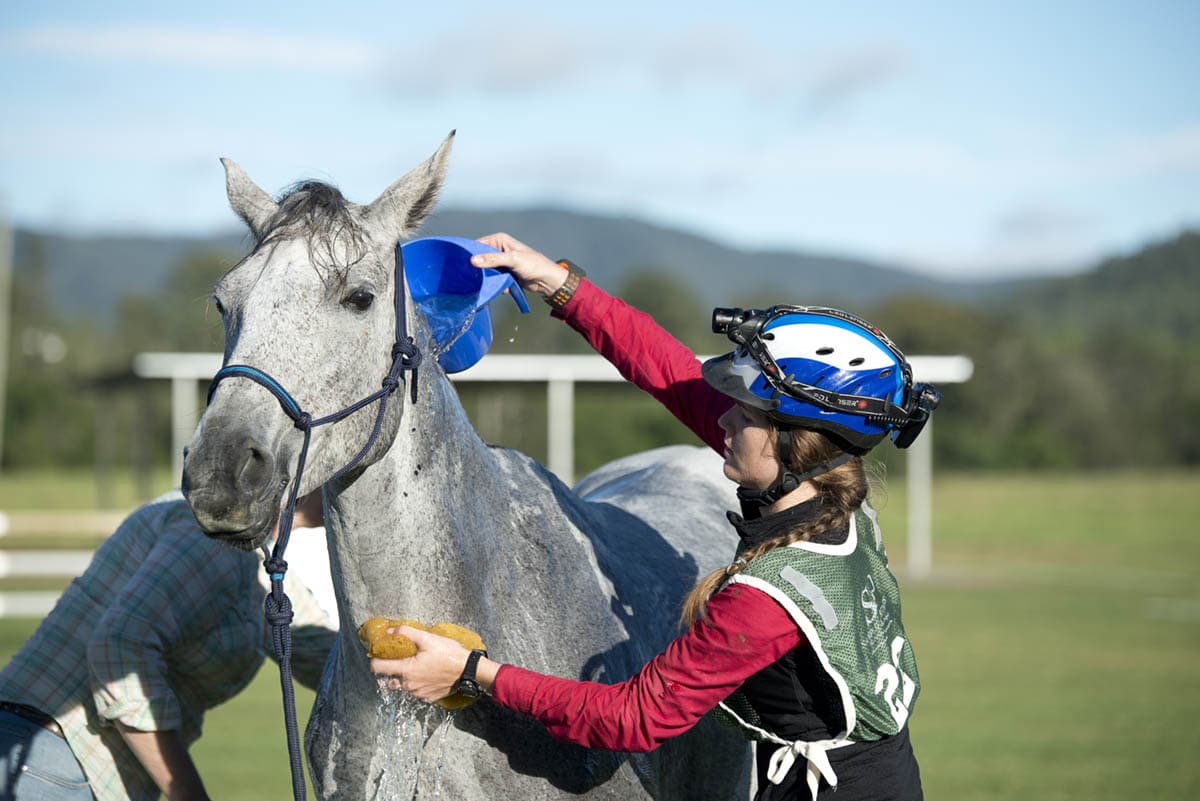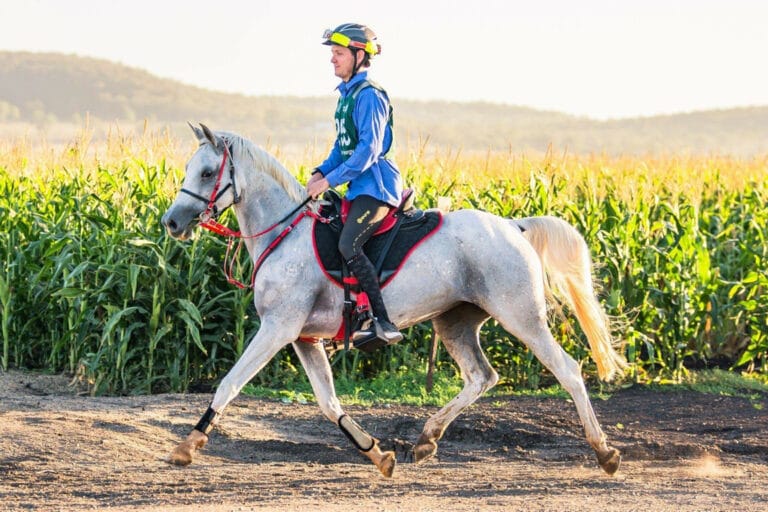Dannii Cunnane collects some tips from The Australian Endurance Riders Association to help prepare a rider and an inexperienced horse for its first training ride.
Introduction to Endurance
The purpose of the Intermediate ride is to introduce newcomers to the sport of endurance without the pressure of a competitive event. The Intermediate ride is non-competitive and is a friendly, low-pressure ride with the focus on a successful completion. It’s assumed however, that the horse that is being trained has had previous trail or riding experience and is not a newly educated horse.
Training
Long and slow distance work is the basis of preparing a novice horse for a training ride. You should plan on riding the horse three to five times per week and allow six weeks to get an inexperienced horse fit for its first 40 kilometre training ride. Always remember that rest is critical to the conditioning of an endurance horse as it allows recovery time from the introduced stresses of training.
The training sessions should each be about one hour in length with a longer session of two hours or more included once per week. Over the preparation time this will extend to longer sessions of three to four hours, which aligns with the time the rider should be expecting to complete the 40 kilometre intermediate ride.

Weeks 1 and 2
The horse should be ridden at the walk and slow trot over mainly flat terrain. This is crucial to building strength in the legs and condition the horse for its future training. During this period it is a good idea to teach your horse to walk-out as strongly as possible so that the conditioning effect is maximised and it will also help you to cover more ground later at rides.
The distance of the slow trot section should be increased steadily over the two-week period while decreasing the walk section. For the average horse this will mean covering about 7 to 8 kilometres initially in a one-hour training session and 10 to 12 kilometres in a two-hour training session.
The amount of rest days to be incorporated into the training program will be dependent on the level of fitness of the horse prior to commencing the training. For unfit horses two days of training can be followed by a day of rest. This can be increased to three or four days of work followed by a day of rest.
Weeks 3 and 4
You can begin to introduce more trotting intermittently with walking to a level where the walking is minimal. When you commence trotting it should initially be for only short distances but gradually increased. During this period you should work on trotting the horse on opposite leads so that it remains even gaited and builds its muscular strength equally on both sides. It is also recommended that you work the horse at different speeds in the trot to develop the horse’s ability to travel at various speeds.
Weeks 5 and 6

Some Intermediate rides will generally involve some substantial hill work and if you do not have access to hills on which to train it would be wise to float your horse to an area where this is possible. Initially you should walk the horse up the hills and as the horse’s fitness improves begin to trot up some of the easier hills. Downhill work this early on should be done at the walk because trotting downhill is hard on a horse’s legs and you are still looking to strengthen and condition them.
Prior to competing at your first Intermediate ride it may be wise to contact the Ride Organiser to learn what the terrain of the track will be like so that you can tailor your training towards what you will encounter at the event.
A week before the training ride the horse should be given a 30 kilometre trial run which would take approximately three hours to complete. This will allow you to check how the horse copes without the excitement of the ride. If all has gone to plan and you have had no problems or received no setbacks as a result of lameness, then your horse will be ready to attempt its first training ride.
Additional training
During the training period there are also a number of other things you can do with your horse that will help in preparation for the ride.
- Accustom your horse to the veterinary procedures to which he or she will be subjected to in the vetting ring. This includes standing patiently when asked, picking up feet, being comfortable in having the mouth examined, having the temperature taken and trotting out easily on a loose lead. By checking your horse’s parameters at home, you will get them used to these activities and this will also help you to learn how your horse’s fitness is developing.
- Try to ride in the company of other horses if possible. At a ride your horse will have to start with forty or more other horses and this can make an inexperienced horse excited. There will also be other horses trotting and cantering past, so the more experience you gain at home will be helpful when riding out at an event.
- Introduce your strapping techniques to the horse so that they will be used to being sponged and scraped down.
- On longer rides encourage your horse to drink at water points and allow the horse to relax and graze every now and then. This will ensure that your horse’s hydration is maintained and gut function is good.
- Use a known measured training track to get a feel for the speed at which your horse travels at various gaits. This will be valuable later on at rides to enable you to control the speed at which your horse is travelling and meet the minimum and maximum time constraints of the ride.
- Try not to become too regimented in your training. Both you and your horse will appreciate variety such as different terrain, long slow rides, short faster rides, some flat work and other types of equestrian activities.

Feeding
Feeding will initially largely depend on the condition that the horse is in when it commences training and the effect of the training on the horse. If the horse is in heavy condition when it starts to train it will need to lose weight slowly and trim down to athletic condition. This type of horse will not need additional feed.
If the horse is already in appropriate condition it will need additional feed in order to meet the additional work requirements. Basically, the horse needs to receive enough feed in order to maintain it in appropriate condition and provide enough energy for the work that the horse is performing.
When you are grooming your horse or saddling up you should look at and feel the horse’s withers, neck, tailhead, girth and ribs to decide whether or not the horse is gaining or losing weight and adjust the quantity of feed accordingly. One of the easiest mistakes to make is to overfeed your horse and have a horse with an excess of energy.
The amount of feed necessary will depend on the quality and quantity of grazing you have available. Horses with access to good grazing will not need much additional feed except for perhaps a vitamin and mineral supplement. Horses with grazing of limited quality or quantity will need additional feed in the form of hay and chaff and some energy dense feed such as grain or prepared feed.
As a general guide about one to three kilogram of hard feed such as oats or prepared feed is adequate for a 500 kilogram horse. However, this needs to take into account, to a degree, the breed of the horse as different breeds requires different levels of energy intake. For example, the thoroughbred horse may require considerably more feeding than the Arabian horse.
Endurance horses require good levels of vitamins and minerals in the diet so ensure that the diet is balanced correctly. Always reduce the amount of grain fed to your horse on rest days by at least half. This is very important to prevent a condition called ‘tying-up’.
Electrolytes are important for endurance horses. Sweat contains high levels of electrolytes that must be replaced or horses become prone to fatigue, dehydration or more severe problems. Horses that are worked and sweat heavily should receive additional salt (between 25 to 50 grams) and an electrolyte supplement formulated for heavy sweating horses performing long slow work such as endurance horses. Horses being prepared for Intermediate rides may not require electrolyte supplementation as they do not work at the same levels of effort as endurance horses.
Water is critical for the endurance horse and a clean supply of cool, fresh water should be available at all times. Many seasoned endurance riders use an additive such as Stock Gain or Molasses to sweeten the water at rides so that horses are more likely to drink.
Further information
While this is a brief introduction to the preparation of a new horse for an initial Intermediate ride there are many different views on training and feeding methods, but the basis of a steady preparation is fairly universal. Making contact with endurance riders in your area will allow you to learn from other riders and determine what exactly works best for your horse.
For more information on Endurance, visit the Australian Endurance Riders Association website which provides educational information, rules, resources and links to State Associations. AERA and each State Association has a Facebook page which are an excellent source of information and support.



